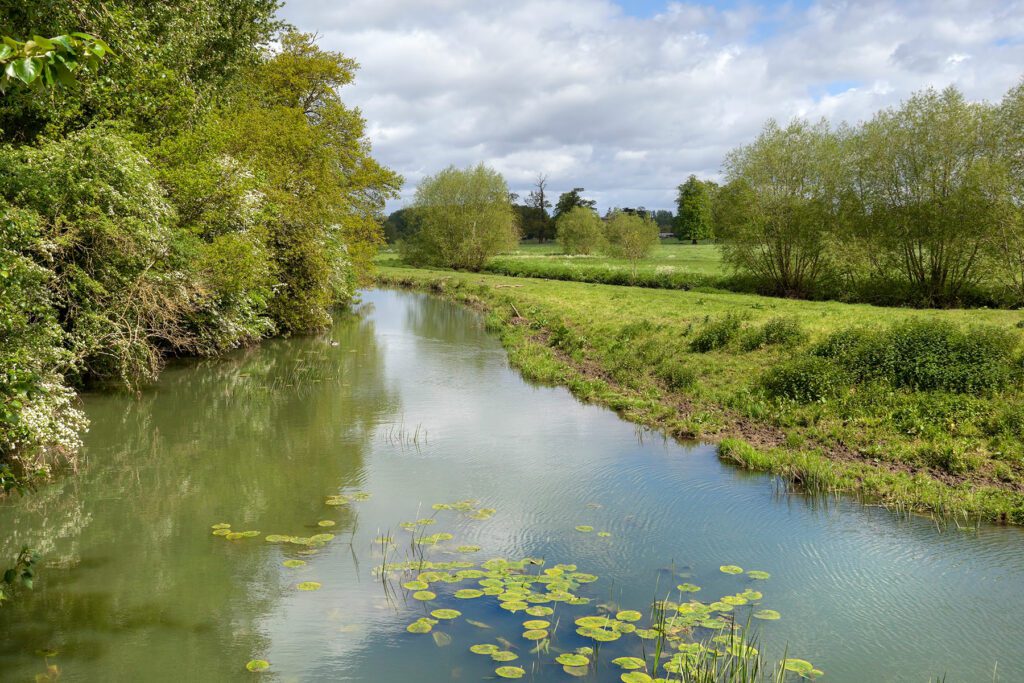There are many issues to consider when it comes to protecting your land for potential future development including knowing who owns the watercourses and your boundary features and another hot topic to also consider is water scarcity.
Watercourses
A developer when considering a site for development must consider how to deal with surface water accumulating on that development. Watercourses have an important part to play in development. If a site includes a watercourse within the site or on the boundary, this may allow for the developer to attenuate the surface water on the site and allow for a subsequent controlled flow into the watercourse on the site. This may avoid the need for a developer to seek easements from neighbouring owners or requisitioning a connection from a water authority.
A watercourse could be natural or artificial and for the purposes of this article, we will focus on natural non-tidal watercourses only. A watercourse has a regular channel with banks or sides and is one that usually flows in a certain direction – it doesn’t need to flow continuously and therefore a stream that dries up in the summer can still be a watercourse.
Being able to prove ownership of the bank of the watercourse will enable a future developer to undertake works required to discharge surface water into the watercourse such as a water outfall or new head wall. It is important therefore to ascertain if you own the watercourse or if you merely have rights to drain into the watercourse.
Quite often title to the bed of watercourses is unregistered. It may be possible for the landowner to register the bed of the watercourse with the help of their solicitor. The first step would be to check the historic title deeds to see if the Land Registry has made a mapping error. If not, a search should be undertaken to ensure the land is not registered to someone else. Assuming it is not the landowner could make an application to the Land Registry under the “ad medium filum aquae” rule could be made – ad medium filum aquae meaning “to the middle line” of the watercourse. If the landowner owns both sides then registration of the whole of the watercourse should be achievable. If the landowner owns one side only of the watercourse, an application should achieve registration to the middle line of the watercourse thereby still enabling works that may be required for the surface water outfall to be constructed.
The ad medium filum aquae presumption can be rebutted if there is evidence to the contrary, for example, evidence that the previous owner did not own or did not intend to convey the bed of the watercourse to the landowner. It is worth noting that the ad medium filum rule does not apply to tidal rivers.
In addition, consents may be required to carry out works to or near the watercourse from other bodies such as the Environment Agency and an Internal Drainage Board depending on the classification of the watercourse.
The law relating to watercourses is complicated and the nature of the watercourse and classification will impact what can or can’t be done and it is important to seek legal advice.
Boundary issues
Ownership gaps between properties can be a major issue for developers. Therefore, knowing the extent of the land you own and who owns the adjoining land and the hedges, verges, water drains, or ditches is important when considering land for development. The importance of these features and who manages them can be often overlooked by landowners because they may not even be aware of the gap.
When a developer looks at a piece of land for development they will want to make sure there are no gaps between the parcels of land that they are buying or between the adopted highway and your red line boundary. If there is a gap, then potentially there could be a ransom strip which could be claimed by a third party as belonging to them, which could prevent development. Often when we are talking about gaps we mean very small areas of land which could be as little as a metre or less in width.
If a gap is identified your solicitor may be able get the gap incorporated into your already existing title because the Land Registry made a mapping error when they first registered the land. If the gap is between your property and the adopted highway your solicitor may be able to make an application under the ‘ad medium filum viae’ (to the centre line of the road) rule if certain conditions apply such as you have always considered the land yours and you have maintained that area and the Council claim that the land is not adopted. As with ad medium filum aquae, the ‘ad medium filum viae’ rule is the legal presumption that you own up to the middle line of the road and this presumption can be rebutted as mentioned above.
It is important to retain original copies of old deeds and correspondence as these can be important in terms of evidencing ownership or claiming rights over ‘gap land’.
Obtaining defective title indemnity insurance can be a solution to this defect in title. Defective title indemnity insurance will in return for payment of a one off premium pay up to a capped amount towards the costs of dealing with any third party claim. Unfortunately, title indemnity insurance can be expensive and it does not prevent third parties bringing claims. The Highway Authority may refuse to rely on the benefit of such a policy and refuse to enter into a highways agreement to adopt the roads in a development and therefore the roads may need to remain private. Furthermore, the Utility Provider may refuse to adopt services laid within the ‘gap land’ which may mean services need to be laid in another more expensive and longer route.
If on the other side of the ‘gap land’ the land is owned by a private landowner, then this needs to be dealt with very sensitively as your neighbour might try and claim that ‘gap land’ as their own and discussing the gap with them will probably mean you are unlikely to obtain a title indemnity insurance policy in relation to that defect or potentially invalidate any existing policy.
Water scarcity
Water scarcity may not seem like a big concern given all the rain we have had this year. 2023 marked a milestone as the first time that the Environment Agency submitted objections to a new housing development on grounds of the shortage of a sustainable water supply. It’s encouraging that water scarcity has now been recognised as a material planning issue. Much coverage has been given recently to the multi-billion infrastructure upgrades which have been brought about by recent Government announcements in response to criticism of the industry. These new upgrade projects can be to the advantage of landowners. For example, water companies are looking at investing in new reservoirs or taking new abstraction licences from other water bodies.
There are opportunities for landowners to negotiate abstraction royalties, set aside land or change their existing land use practices. We are just starting to see several of the first few projects and transactions coming through. To give some examples, we’ve seen the Ofwat Innovation Fund looking at sponsoring farmers to create water storage batteries, utilising soil sponges in wetlands as well as turning existing lakes and ponds into reservoirs or supply reserves.
The Government is looking at encouraging farmers to undertake more efficient water management in their agricultural practices. It has set a target under its Defra Plan for Water Commitment to increase on farm storage of water by 66% by 2050. Other measures in consideration under the plan involve farming in a way that reduces run off and demand for supplemental water supplies. In East Cambridgeshire for example, the Government is looking at creating credit schemes to encourage nature based solutions to promote water retention. Water Positive Development – as it is being called – is expected to be rolled out in other regions once it has been proven in Cambridgeshire. We are also seeing water companies working with local authorities working up contingency plans which may involve utilising reserves held by private landowners.
If you sell off part of your land it is also essential that you consider if you need to retain any water abstraction rights/licences in order for you to continue to use your retained land effectively.
If you would like to discuss any of the issues raised in this article, please contact Cheryl Brady, Richard Walford or Elizabeth Newson.
Print article




